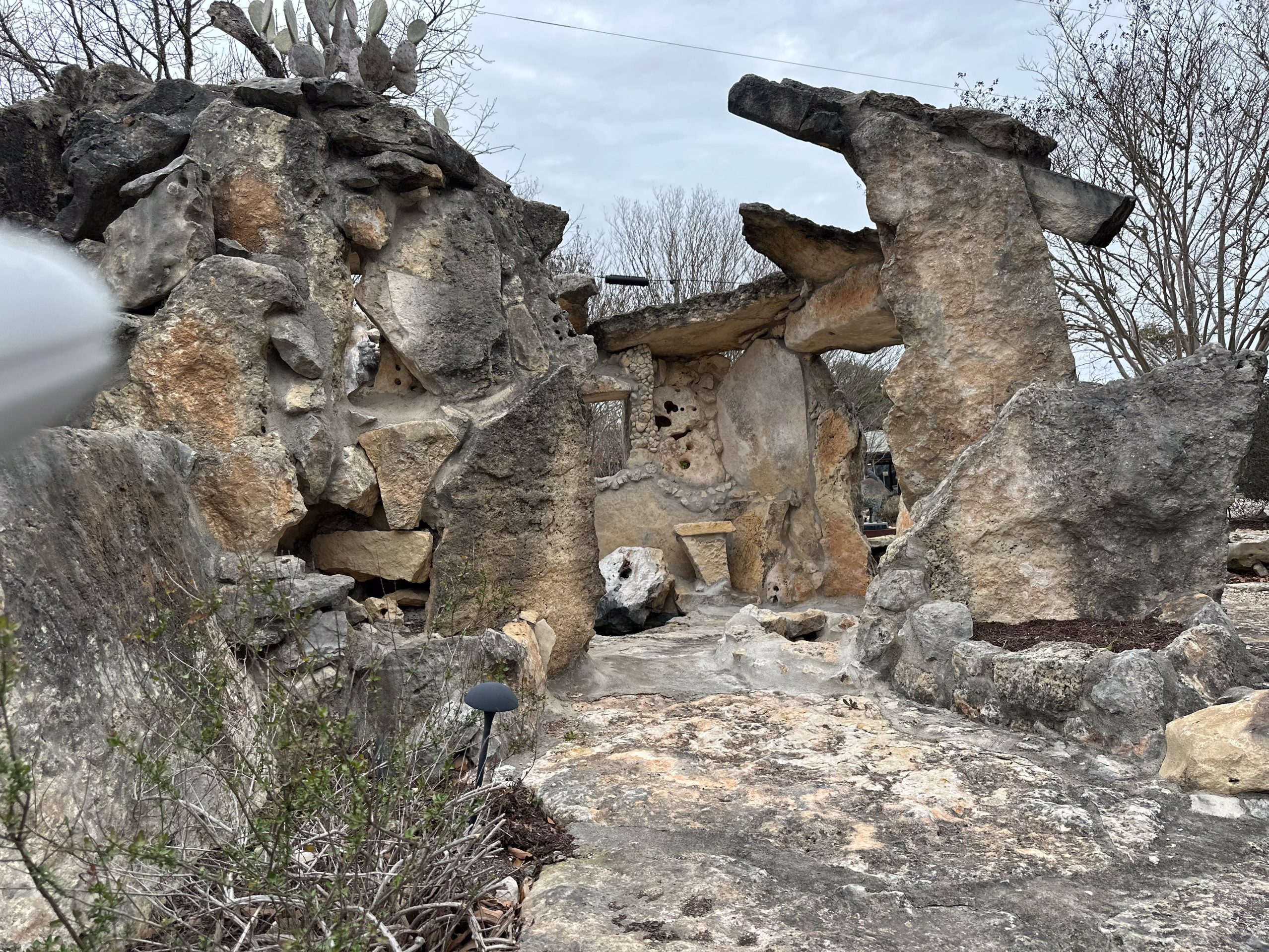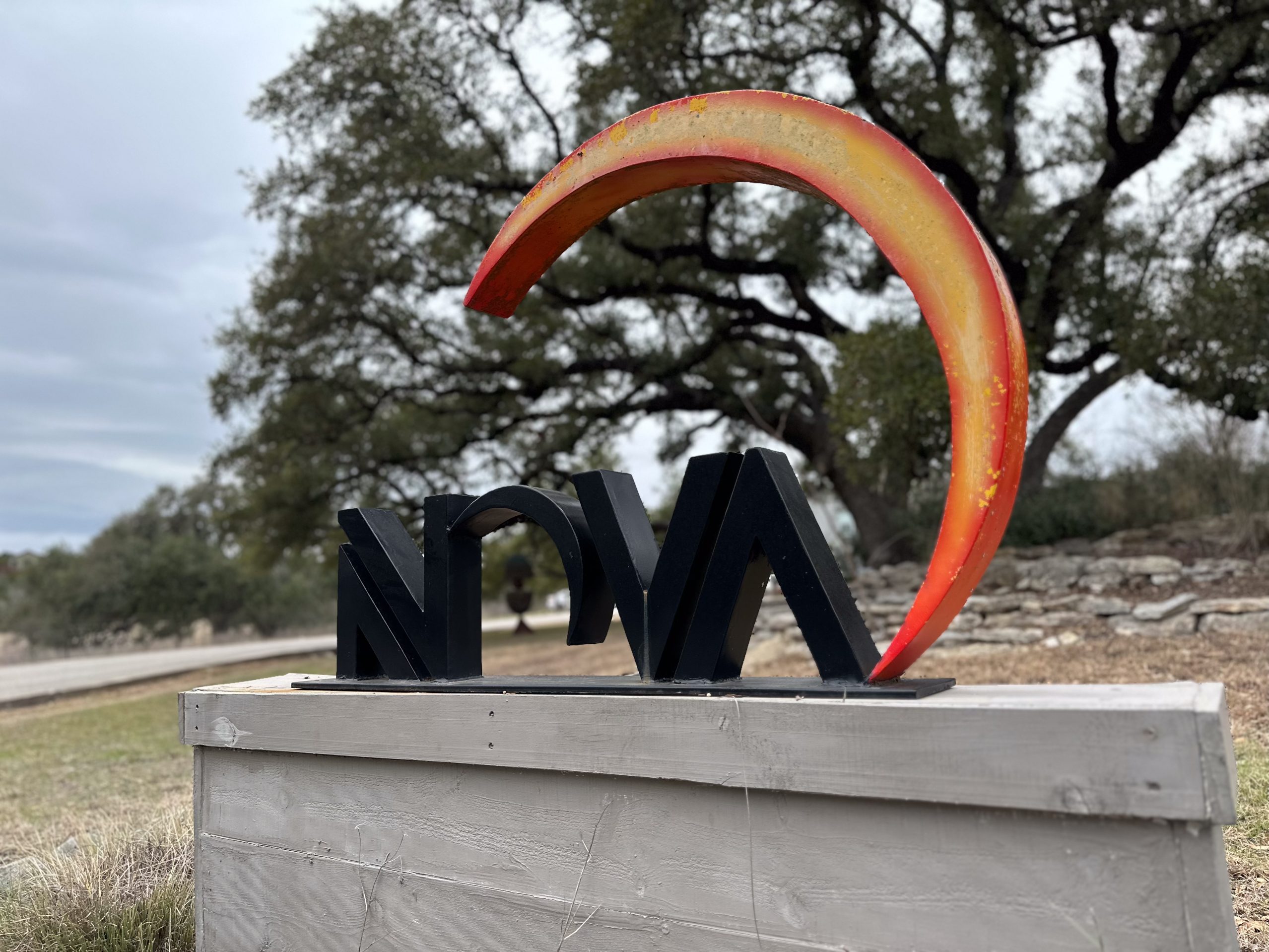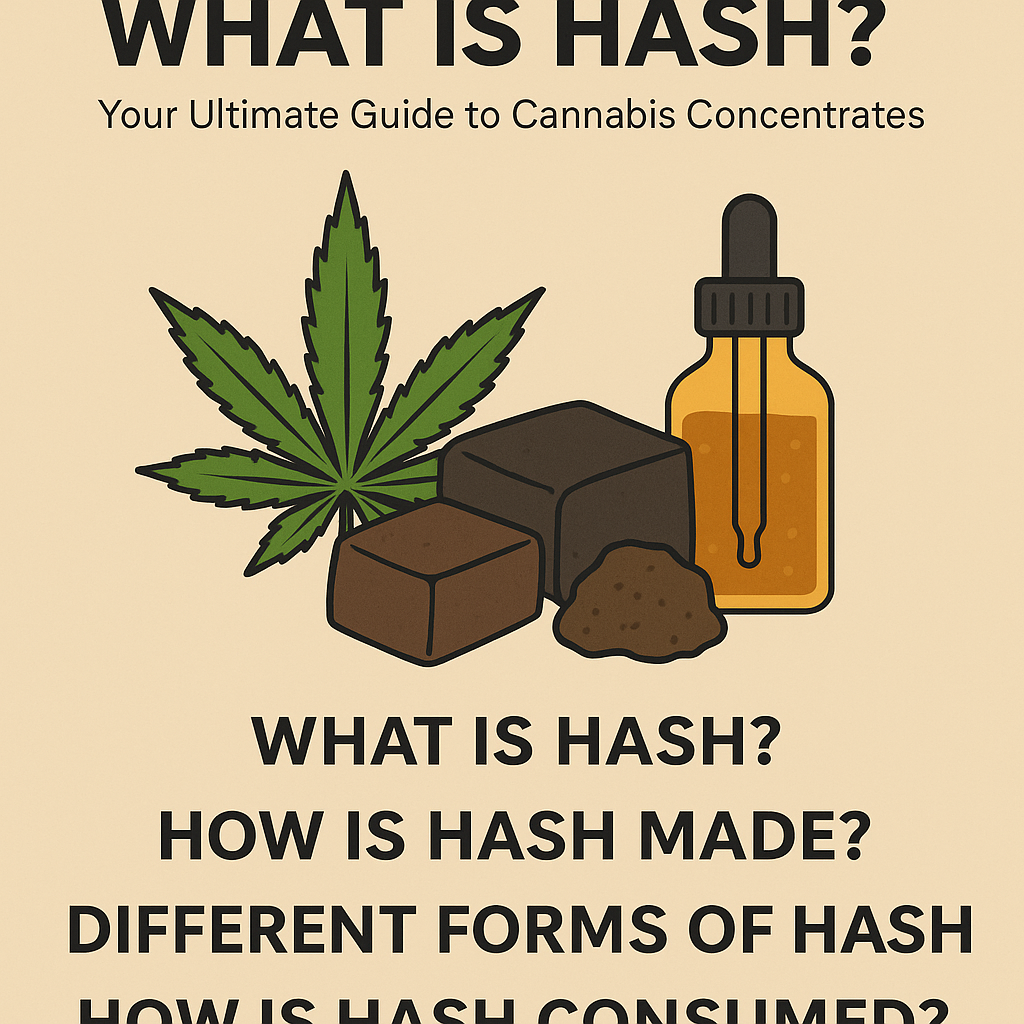Last Updated on September 17, 2025
What Is Hash? Your Ultimate Guide to Cannabis Concentrates
Key Facts at a Glance
| Category | Key Facts |
|---|---|
| Definition | Hash (hashish) is a traditional cannabis concentrate made by collecting and compressing resin glands (trichomes) that contain THC, CBD, and terpenes. |
| Difference from flower | Unlike marijuana flower (“weed”), hash is more potent due to higher concentration of active cannabinoids. |
| Production Methods | – Traditional hand-pressed – manually rolling resin onto hands into blocks- Dry sifting – collecting kief via screens or mesh, then pressing- Ice water extraction (bubble hash) – uses cold water to separate trichomes, then filters them- Solvent-based extraction – uses solvents like butane or ethanol to extract cannabinoids; solvent evaporates, leaving concentrated “hash oil.” |
| Forms of Hash | – Traditional: dark, solid, crumbly or block form- Bubble: light-colored, “full melt” quality that melts when heated- Oil: viscous, amber liquid, highly potent—often used for dabbing- Rosin: solventless concentrate made using heat and pressure, chemical-free extraction. |
| Consumption Methods | – Smoking: on its own or mixed with cannabis flower- Vaping: via vape pen or desktop vaporizer- Dabbing: heating a small amount on a hot surface and inhaling the vapor- Edibles: infused into oils or butter for cooking. |
| Medicinal Applications | Hash is noted for potential use in:- Pain management- Anxiety and depression relief- Appetite stimulation (e.g., during chemotherapy). |
| Effects & Risks | Short-term effects: euphoria, relaxation, altered perception of time, increased appetite.Long-term risks: memory impairment, anxiety, possible dependence. Users should be aware of its high potency and use responsibly. |
Table of Contents
What Is Hash? Your Ultimate Guide to Cannabis Concentrates
Hash, short for hashish, is one of the oldest and most revered forms of cannabis concentrate. Originating from the resinous glands of the cannabis plant, hash has been used for centuries across various cultures for both medicinal and recreational purposes. In this comprehensive guide, we’ll delve into what hash is, how it’s made, its various forms, consumption methods, potential effects, and its medical applications.










What Is Hash?
Hash is a concentrated form of cannabis made by collecting and compressing the resin glands, known as trichomes, from the cannabis plant. These trichomes contain the plant’s active compounds, including tetrahydrocannabinol (THC), cannabidiol (CBD), and other cannabinoids and terpenes. The process of making hash involves separating these trichomes from the plant material and then compressing them into a solid form.
How Is Hash Different Than Weed?
While both hash and weed come from the cannabis plant, they differ significantly in potency and form.
Weed (Marijuana): Refers to the dried and cured flowers of the cannabis plant. It contains varying levels of THC and is typically consumed by smoking or vaping.
Hash: A concentrated form of cannabis made by isolating and compressing trichomes. It contains higher concentrations of THC, making it more potent than regular weed.
In essence, hash is a more concentrated and potent form of cannabis compared to traditional weed.
Freedom Starts Here. Take Back Your Life Today.
Same-Day Admissions in Austin Available.
How Is Hash Made?
The process of making hash involves several methods, each affecting the quality and potency of the final product.
Traditional Hand-Pressed Hash
One of the oldest methods involves manually rubbing the cannabis plant’s flowering tops between the hands to collect the resin. This method produces a sticky substance that is then pressed into blocks.
Dry Sifting
This method involves using screens or mesh to sift the trichomes from the plant material. The collected kief is then pressed into hash.
Ice Water Extraction (Bubble Hash)
In this method, cannabis plant material is mixed with ice and water, causing the trichomes to become brittle and break off. The mixture is then filtered through mesh bags to collect the trichomes, resulting in bubble hash.
Solvent-Based Extraction
This modern method uses solvents like butane or ethanol to dissolve the cannabinoids and terpenes from the plant material. The solvent is then evaporated, leaving behind a concentrated form of hash known as hash oil.
Different Forms of Hash
Hash comes in various forms, each with unique characteristics:
Traditional : Typically dark brown or black, this form is solid and can be crumbled or broken apart.
Bubble : Light in color and often referred to as “full melt” due to its ability to melt completely when heated.
Oil: A viscous, amber-colored liquid that is highly potent and often used for dabbing.
Rosin: A solventless concentrate made by applying heat and pressure to cannabis plant material, extracting the resin without the use of solvents.
How Is Hash Consumed?
Consumption can occur in several ways:
Smoking: It can be smoked on its own or mixed with cannabis flower.
Vaping: Can be vaporized using a vape pen or desktop vaporizer.
Dabbing: A method where a small amounts are vaporized on a hot surface and inhaled.
Edibles: can be infused into oils or butter and used in cooking.
Medical Applications of Hash
This plant has been studied for its potential medical benefits:
Pain Management: Due to its high THC content, hash may help alleviate chronic pain.
Anxiety and Depression: Some users report mood enhancement and relaxation.
Appetite Stimulation: Hash may help stimulate appetite in individuals undergoing treatments like chemotherapy.
What Are the Potential Effects of Hashish Use?
While this can offer therapeutic benefits, it’s essential to be aware of potential side effects:
Short-Term Effects: Euphoria, relaxation, altered perception of time, and increased appetite.
Long-Term Effects: Potential memory impairment, anxiety, and dependence with prolonged use.
It’s crucial to use hash responsibly and be aware of its potency.
Conclusion
This drug is a potent and versatile cannabis concentrate with a rich history. Understanding its production methods, forms, and effects can help users make informed decisions about its use. Whether for recreational enjoyment or medicinal purposes, hash offers a unique experience within the cannabis world.
At Nova Recovery Center, we provide comprehensive treatment for individuals struggling with hash addiction and abuse. Our evidence-based programs address not only the physical dependence on cannabis concentrates but also the underlying emotional and behavioral factors that drive use. We begin with a thorough assessment to develop a personalized treatment plan that meets each client’s unique needs. Clients benefit from a full continuum of care, including medical detox, residential treatment, outpatient programs, and sober living options. Our team uses proven therapies such as cognitive behavioral therapy (CBT), motivational interviewing, and relapse prevention strategies to build long-term recovery skills. We also emphasize holistic care, incorporating activities that heal the mind, body, and spirit. Family support and education are integrated into treatment to strengthen relationships and create a healthier home environment. By combining structured programming with compassionate support, Nova Recovery Center helps clients achieve sustainable sobriety and regain control of their lives.
[1] Lafaye, G., Karila, L., Blecha, L., & Benyamina, A. (2017, September). Cannabis, cannabinoids, and health. Dialogues in clinical neuroscience. Retrieved April 25, 2023, from https://www.ncbi.nlm.nih.gov/pmc/articles/PMC5741114/
[2] Volkow, N. D., Baler, R. D., Compton, W. M., & Weiss, S. R. B. (2014, June 5). Adverse health effects of marijuana use. The New England journal of medicine. Retrieved April 25, 2023, from https://www.ncbi.nlm.nih.gov/pmc/articles/PMC4827335/
[3] Peter Grinspoon, M. D. (2021, September 24). Cannabidiol (CBD): What we know and what we don’t. Harvard Health. Retrieved April 25, 2023, from https://www.health.harvard.edu/blog/cannabidiol-cbd-what-we-know-and-what-we-dont-2018082414476
Other Outpatient Drug and Alcohol Rehab Locations
Frequently Asked Questions About Hash and Cannabis Concentrates
Does hash get you high?
Yes. Hash contains concentrated levels of THC, the psychoactive compound in cannabis, which produces a stronger high than marijuana flower.
What is hash in drug slang?
In slang, “hash” refers to hashish, a cannabis concentrate made from compressed trichomes (resin glands) of the marijuana plant.
Is hash a hard drug?
Hash is not typically classified as a “hard drug,” but it is a potent cannabis concentrate. Its high THC levels can lead to dependence and negative side effects with frequent use.
Is hash stronger than kief?
Yes. Hash is generally stronger than kief because it is compressed and refined, making it more concentrated in THC.
What do cannabis concentrates do?
Cannabis concentrates deliver a more intense dose of cannabinoids, often resulting in faster and stronger effects compared to smoking flower.
What is the best form of cannabis concentrate?
The “best” form depends on personal preference. Some prefer solventless options like rosin, while others choose oils or wax for their potency and versatility.
Is concentrate stronger than bud?
Yes. Concentrates can contain two to four times more THC than traditional cannabis flower.
Is concentrate stronger than extract?
Concentrates and extracts are related but not identical. Extracts are made using solvents, while concentrates can also be solventless. Potency varies by product.
What are trichomes?
Trichomes are tiny, crystal-like structures on cannabis plants that produce cannabinoids and terpenes. They are the source material for hash and kief.
Are the trichomes what get you high?
Yes. Trichomes contain THC, CBD, and other compounds that cause the psychoactive and therapeutic effects of cannabis.
What does a trichome look like when ready to harvest?
Trichomes look like tiny mushroom-shaped glands. They turn from clear to cloudy or amber when the plant is mature and ready for harvest.
Do trichomes turn into kief?
Yes. When trichomes fall off the cannabis plant, they are collected as kief, which can be pressed into hash.
What is THC used for?
THC is used recreationally for its psychoactive effects and medically for conditions such as pain, nausea, and appetite loss.
What is CBD vs THC?
THC is psychoactive, producing a high. CBD is non-intoxicating and is often used for its potential calming and anti-inflammatory effects.
What does THC do to the body?
THC binds to cannabinoid receptors in the brain and body, altering mood, perception, appetite, and memory.
What is THC and is it legal?
THC is the main psychoactive compound in cannabis. Its legality varies by state and country—legal for medical or recreational use in some areas, illegal in others.
What does CBD actually do?
CBD interacts with the endocannabinoid system to promote relaxation, reduce inflammation, and ease anxiety without causing a high.
Is CBD considered a drug?
Yes. CBD is classified as a cannabinoid drug, though it is non-intoxicating. Some CBD products are FDA-approved for medical use.
What happens if I take CBD every day?
Daily CBD use may help manage stress, pain, or sleep issues, though effects vary. Long-term research is ongoing.
Is there a downside to CBD?
CBD is generally safe, but side effects can include fatigue, diarrhea, or interactions with certain medications.


